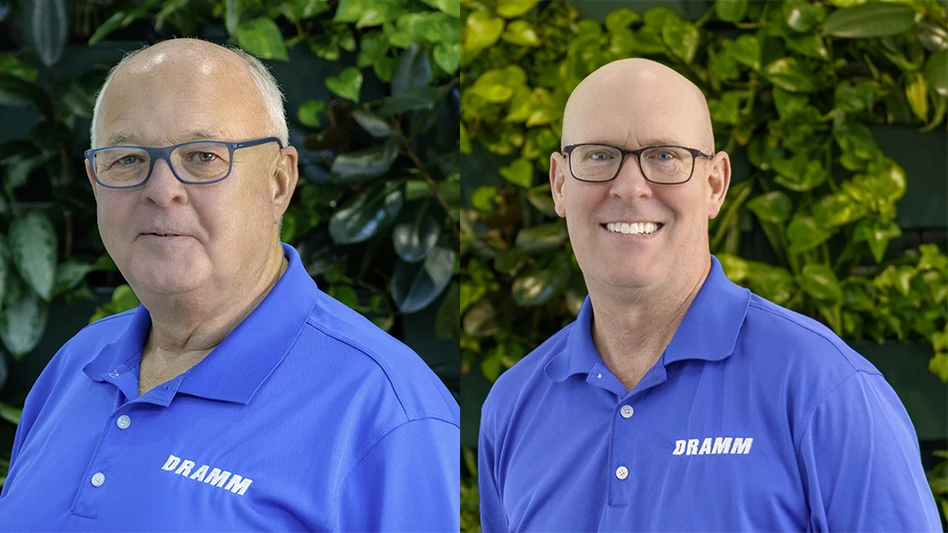
Michelle Simakis
After 10 years of breeding work, PanAmerican Seed debuted an Impatiens walleriana at the 2019 California Spring Trials that the company says has proven resistance to Impatiens Downy Mildew.
PanAmerican demonstrated the resilience of new Beacon Impatiens by displaying the plants inoculated with the host-specific water mold that causes IDM, Plasmopara obducens, at six weeks, and comparing Beacon to plants that are not resistant to the disease. Beacon appeared healthy, save for a few yellowing leaves, and did not show any signs of downy mildew, while the non-resistant plants were stunted, wilting and barely had any blooms. A white film glossed the underside of the leaves, a classic symptom of the infection.
Lisa Lacy, global product manager for PanAmerican, pointed to one of the yellowing leaves on the otherwise robust Beacon plants and explained that it is a sign the plant is fighting the disease, and Beacon will eventually drop any leaves affected to prevent an outbreak.
Beacon, a 2020 global introduction, will debut in six colors, which include popular Bright Red and White, and two mixes. Colors Violet Shades, Salmon, Carol and Orange will round out the series that is low spreading. The goal is to introduce more varieties so that Beacon has a robust selection like Super Elfin, an I. walleriana with the branching and vibrant colors of Beacon, but not the disease resistance.
![]() Impatiens Beacon Bright Red is one of six new colors in the new series from PanAmerican Seed.
Impatiens Beacon Bright Red is one of six new colors in the new series from PanAmerican Seed.
Lacy said growers do not have to use a preventative spray to help Beacon resist downy mildew – it is generically able to fight the disease, which became a significant problem in the U.S. about 15 years ago, when several states reported outbreaks.
According to an article in Greenhouse Management published in July 2018, the Horticultural Research Institute says that Plasmopara obducens has been known to exist in the U.S. since the 1880s, when it was first discovered on a native impatiens called orange jewelweed. Researchers are still trying to figure out why there was such a dramatic increase of devastation in 2004, Dr. Jill Calabro, the research and science programs director at HRI, told Greenhouse Management.
PanAmerican will offer retailers point-of-purchase materials to help promote and educate consumers about Beacon. More information about the new impatiens for growers, home gardeners and landscapers is available at http://beaconimpatiens.com.
Part of the Beacon program will include a philanthropic initiative, as 3 percent of the yearly global sales of Beacon will be donated to lesser-known charities to help "shine a light" on their work. Sales from 2019/2020 will go toward the Osteogenesis Imperfecta Foundation, which aims to improve the quality of life for those living with osteogenesis imperfecta through research, education, awareness and mutual support.
Latest from Nursery Management
- GIE Media Horticulture Group wins five regional 2025 Azbee Awards of Excellence
- Get to know Pat Reilly with NewGen Boxwood and the American Boxwood Society
- Terra Nova Nurseries introduces rust-free and disease-resistant heucherella
- John T. Nickel, founder of Greenleaf Nursery Co., passes away at 89
- Three tours offered at 2025 Farwest Show
- Garden Media Group announces sixth annual Women in Horticulture Week
- Star Roses and Plants announces National Knock Out Rose Day
- The Growth Industry Episode 4: How federal budget cuts are affecting horticulture nonprofits





